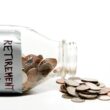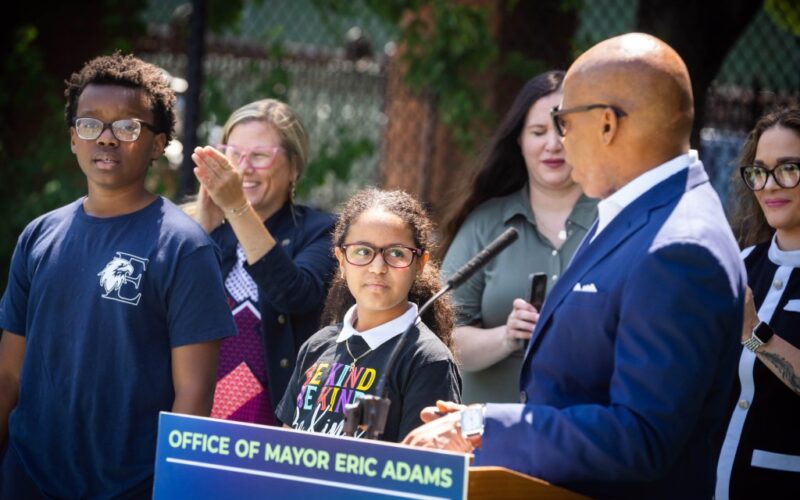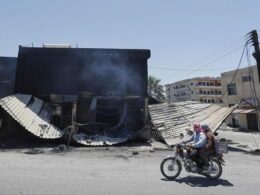The first year of Mayor Adams’ after-school expansion shut out a number of high-need New York City schools, prompting an outcry from parents, according to a report issued Wednesday by Comptroller Brad Lander.
Starting this fall, 40 schools will open 5,000 new spots in after-school programs, as part of a $21-million investment in child care after the regular school day. While the expansion is expected to benefit families in the Bronx and low-income areas of the other boroughs, swaths of Brooklyn and Queens were excluded from the funding, as were all Manhattan district schools and programs for students with significant disabilities, the comptroller found.
Lander, a staunch supporter of Democratic mayoral nominee Zohran Mamdani, used the analysis to take a jab at the mayor, who’s opposing the Queens assemblyman on an independent ballot line. Mamdani has made free child care a key plank of his affordability campaign.
“Predictably, this administration has not only failed to equitably deliver more free after-school seats, but seems to have cherry-picked favorite neighborhoods,” Lander said. “The city should be distributing resources to district schools in all neighborhoods in need across all five boroughs — especially for many of our students with disabilities who are locked out entirely.”
An Adams spokeswoman tore into the analysis for disregarding the broader after-school landscape, which includes programs in some of the neighborhoods left out of the expansion. If re-elected, Adams, who skipped the primary after his since-dismissed federal corruption indictment, has promised to keep growing the program to 15,000 more students over the next few school years.
“We consulted community organizations, schools, and families to ensure this first phase of these programs equitably reached those most in need,” said Kayla Mamelak Altus, the mayor’s press secretary. “Where was Brad Lander then? It’s disappointing that Brad was missing in action, only to later play politics with our city’s children by issuing a misleading report that distorts the facts by ignoring our existing programs.”
The 40 new schools, on average, have higher concentrations of students in poverty than schools citywide, and also higher than the city’s existing after-school portfolio, according to the Department of Youth and Community Development.
DYCD said it worked with the city’s public schools to use a “data-driven” approach to select high-needs elementary schools for the expansion, considering whether they lacked programming or were in areas of after-school service gaps.
“The Comptroller’s report neglects to highlight the more than a thousand DYCD-funded after-school programs already in the city,” said DYCD Commissioner Keith Howard. “As an example, the report points out no seats were awarded in Districts 28 or 30, and erroneously fails to mention DYCD already funds a total of 25 free COMPASS elementary programs in those districts — serving more than 3,300 young people.”
“This is just the first phase — we will continue to target communities with the highest need and lack of existing programs.”
Broken down by boroughs, the comptroller’s analysis showed just one district and one charter school were awarded new seats across Crown Heights, Bedford-Stuyvesant, Brownsville, East New York, and Bushwick. Instead, much of the expansion was concentrated in South Brooklyn, where families have been clamoring for after-school options since the state changed how it funds the programs.
Two Manhattan charter schools received new funding, while district schools were shut out. In Queens, nine of the 11 selected schools were in Districts 24 and 27, including in Corona. All of western Queens and schools in East Elmhurst, Jackson Heights, Richmond Hill and most of Jamaica were not included in the first phase of the expansion.
Among the Queens schools left without were P.S. 171 Peter G. Van Alst in Astoria and P.S. 76 The William Hallet School in Long Island City. Both schools, like those in South Brooklyn, until recently received after-school funding from the state. But when the formula was changed, the programs were shut out of public after-school funds, and administrators and families had to scramble.
“We have been knocking on doors, begging, asking for help,” said Whitney Toussaint, co-president of Community Education Council 30, noting that both schools had economic need indexes of 93%. “And so, when Mayor Adams said with this rollout, they were going to do the inaugural rollout with schools with the most need, I immediately thought of these two schools, and I was surprised when they weren’t selected at all.”
While P.S. 76 dipped into their school budget for a small program, Toussaint said, she estimated it will cost about $70,000 for P.S. 171 to keep after-school services this year: “And they don’t have the $70,000. I mean, where are they gonna come up with $70,000 in a week? So, we’re trying to figure it out. Like, I don’t care. I’ll get out here and beg.”
No District 75 schools for students with significant disabilities were selected, though some may be able to participate in shared after-school programs in their buildings, according to the Department of Youth and Community Development.
The City Council is expected to hold an oversight hearing on the expansion on Sept. 18.








